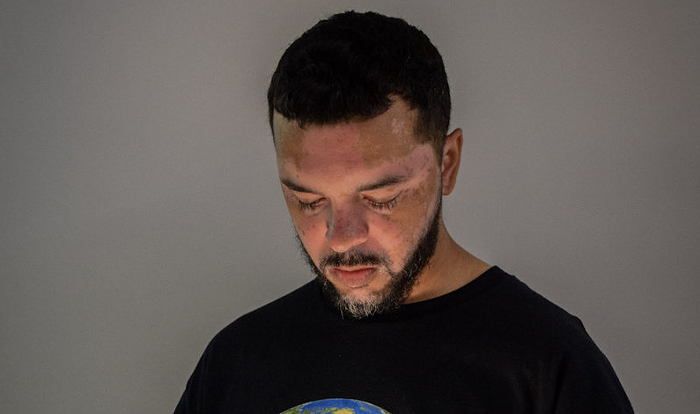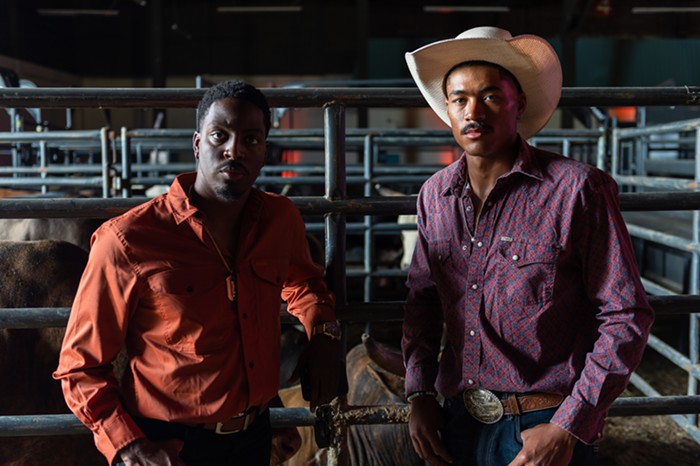[In which food critic Chris Onstad puts down his pen, rolls up his sleeves, and goes behind the scenes to work alongside the kitchen staff of Castagna.—Editor]
Prep Day
We're in Castagna's sidewalk herb garden, and I mention to chef Justin Woodward that one of my hobbies is brewing dissatisfying root beer from fresh plants. "Have you tried wild licorice?" he asks, after hearing that licorice root is one of the common ingredients. He walks me 30 feet to a massive oak tree and points to a sprig growing in a mossy crook eight feet up. I pull it out, rub the root clean, and bite. It has an intensely strong and sweet anise flavor that makes the licorice root I've been using seem more appropriate for mulching. With a single suggestion this chef—a veteran of Denmark's Noma, one of the most highly ranked restaurants in the world—has solved a problem I've been working on for a year.
We walk back to the kitchen, where I work with three cooks to process a case of local fava beans. They don't blanch the beans first, which would make them worlds easier to peel but compromise their texture and color. Instead we take a paring knife, notch a particular place, then pull off the lid and strip away the casing. Thousands of times. Together, we spend four man-hours on one ingredient of a six-ingredient dish. The dish is just one of 10 items on a set tasting menu (which is actually 20 items when you factor in unlisted dishes, house breads, a palate-cleansing pre-dessert, and mignardises). There are three menus available on any given night. Later, we move on to peeling individual peas, easily 2,000 of them, one-by-one. These labor-intensive details will not be readily apparent to most people on the other side of the kitchen wall, but in a restaurant where the executive chef scrubs the dishwasher's station before the dishwasher arrives, such principles make sense.
Why don't more people visit this monastic temple of food? This is ingredient-forward, locally sourced cooking based almost entirely on classic and ancient techniques, and a crystalline form of all the messages we value in local dining. "Delicious" is Woodward's primary goal. "This is our gift to the city," he says, when asked why they work so hard.
It's a Slow Night
"There's a lack of a category for this level of food [in Portland]," says pastry chef Eve Kuttemann, while prepping for a slower-than-usual night. She describes how in Paris, where she cooked prior to moving to Portland, restaurant types have long been rigidly codified, and that hierarchy is universally understood. The masterful chefs of 18th-century aristocracy—who were forced into commercial service by the French Revolution and the fall of their masters' houses—also largely influenced restaurant culture there. Portland obviously doesn't have the same cultural precedent. Our homegrown pinnacle of fine dining, according to a recent Mercury reader poll, is Toro Bravo, which serves rustic, shared food in a decidedly casual, energetic dining room.
Castagna also presents an unfamiliar value proposition. It's an expensive gamble for a population that doesn't have a tradition of fine dining. And though it's easy to spend as much at a more casual restaurant, diners just aren't assured that they'll leave satisfied. The layers of experience and design that come with dining at its highest levels (the building of trust, the paced exposure to steadily less-familiar and more exciting ideas) are also unfamiliar pleasures. The value of world-class service is another subject entirely.
Will Castagna adapt in order to attract a wider audience? The team is unified in its answer, even when interviewed separately. Owner Monique Siu will proudly wait for the gap between Castagna and more common perceptions of fine dining to fill in, rather than bend and redesign her restaurant to suit current tastes. It's her vision, and she's clearly a patron of the arts: It's her mission to preserve this model of fine dining, regardless of profits. Kuttemann concurs: "There needs to be this kind of restaurant in this town. We need to push forward, not take a step back. We are a leading figure and we will stay that way."
Castagna is, therefore, an influential mothership, incubator, and think tank in a striving restaurant city. Many chefs who are local household names have trained there; Elias Cairo, founder of Olympic Provisions, was executive chef prior to Matt Lightner, who departed for New York and two Michelin stars. Techniques and training that were learned at Castagna trickle down to food we enjoy far more regularly.
Speaking of, how is the food? I wasn't there anonymously, so I can't offer an unbiased opinion. What I do feel qualified to say is that based on my experiences shadowing in Michelin-starred kitchens in Europe and great kitchens here, the craftsmanship and creative intensity on display at Castagna equals or exceeds many of them. It's a mandatory dining experience for anyone who wants to see Portland cooking at its highest level.



















